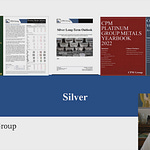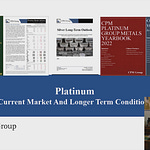On June 11th, Jeffrey Christian of CPM Group participated in the latest Astrologer Fund hosted “Three Stock Lunch” in a hybrid format, offering investors a concise, 15–20 minute deep dive into precious metals markets.
Investment Demand: The Driving Force in Gold
Jeffrey began by noting that investment demand has been the single most important factor lifting gold prices over the past two years and is poised to remain strong into 2025. Investors across the spectrum—from retail traders to sovereign wealth funds—are piling into gold to hedge against a broad array of anxieties:
Political and economic uncertainty at home and abroad
Social and intellectual unrest, which adds layers of risk to traditional assets
The desire to diversify portfolios and protect purchasing power
According to Jeffrey, these underlying concerns have fueled a sustained surge in gold purchases, as risk-averse market participants seek stability in an increasingly unpredictable world.
Central Bank Buying: Fact vs. Fiction
A common misconception is that central banks have tapered off gold buying entirely. Jeffrey dispelled this myth with hard data:
Since 2008, central banks have bought an average of 10 million ounces of gold per year.
In 2024 they purchased about 8 million ounces, and while they are on pace to buy fewer this year, the reduction reflects price sensitivity rather than waning demand.
When gold prices climbed roughly 25% year-over-year, the dollar amount central banks allocated to gold stayed similar, meaning they simply acquired fewer ounces at higher prices.
Far from abandoning gold, central banks continue to view it as a core reserve asset—they’re simply balancing budgeted reserve spending against prevailing market prices.
Debunking the Fort Knox Audit Myth
One of the “fictions” Jeffrey targeted was the idea that U.S. gold reserves at Fort Knox had never been fully audited. He pointed out that:
A comprehensive audit of Fort Knox bullion—including bar-by-bar counts, weights, and purity checks—was completed over a multi-year period.
Even noted skeptics like Ron Paul had, more than a decade ago, reviewed the full audit report, confirming that every bar in U.S. reserves was accounted for.
In short, the U.S. gold stockpile has been thoroughly verified, and there is no credible basis for claims that it remains uncounted.
U.S. Dollar and Treasuries: Still in Demand
Contrary to persistent rumors, Jeffrey underscored that neither foreign governments nor global investors are dumping the U.S. dollar or Treasuries:
The U.S. dollar index is higher today than it has been in recent years.
International holdings of U.S. Treasuries are at record levels—north of $9 trillion.
This data makes clear that the dollar’s role as the world’s primary reserve currency remains intact, and global capital continues to flow into U.S. government debt.
Basel III and Gold: No Direct Connection
Another misunderstanding is that the upcoming Basel III banking regulations will dramatically affect gold’s capital treatment. Jeffrey clarified that:
The July changes at the Bank for International Settlements (BIS) are not to be confused with the Basel III reforms.
Gold’s regulatory treatment under Basel III remains unchanged, and the new rules introduced by BIS in July do not alter how banks hold or report gold.
Silver Market Realities: Surpluses, Not Deficits
On silver, Jeffrey painted a similarly data-driven picture:
Investment demand for silver surged in 2023–24 and is expected to climb even higher this year.
Some investors who bought during the “Wall Street silver squeeze” sold into the rally, restraining prices—but those disenchanted sales have largely run their course.
Honest analysts see surpluses in silver production, not deficits. Fabrication demand has been healthy but is not the primary driver of the recent price rally—it’s the influx of investment buying.
Above-ground inventories remain at record highs, debunking claims that the world is “running out” of minable silver.
For more information about the Astrologer Fund, please click the link below.












Share this post